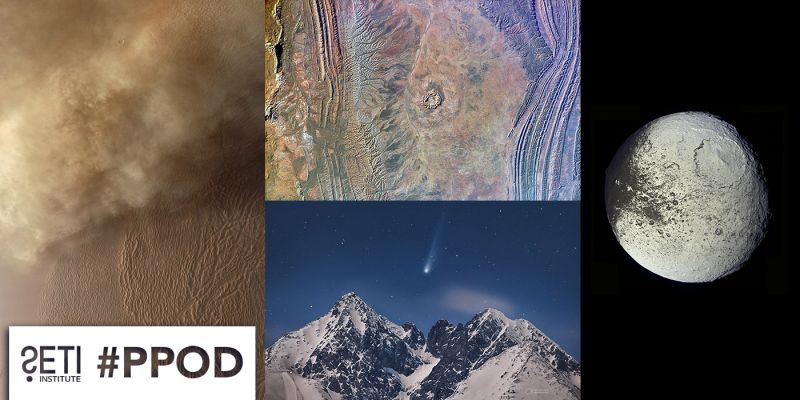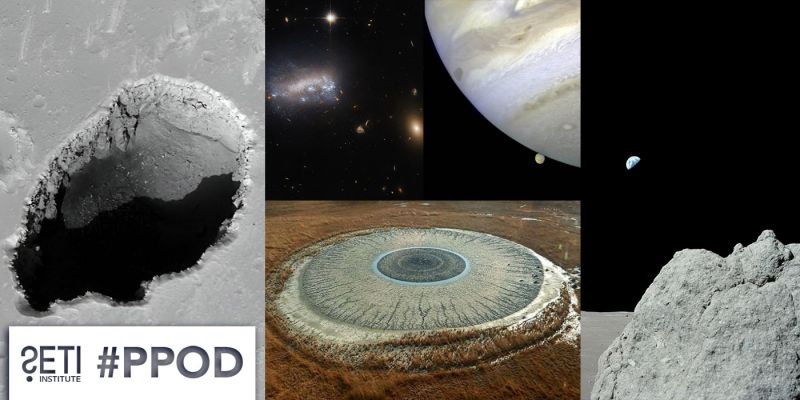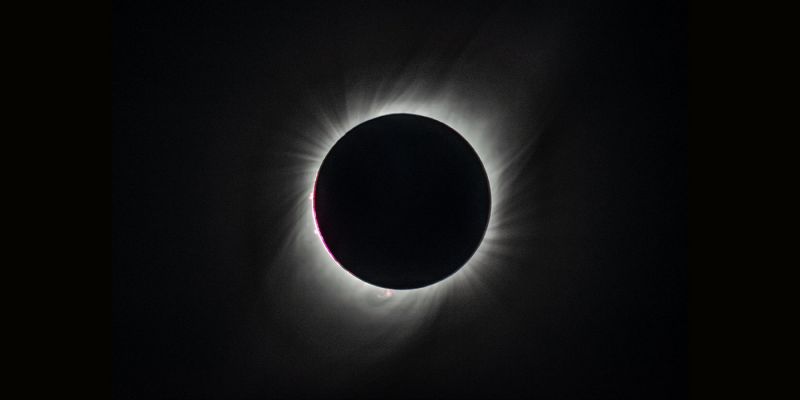The Juno spacecraft arrives at Jupiter to study its clouds and moons.
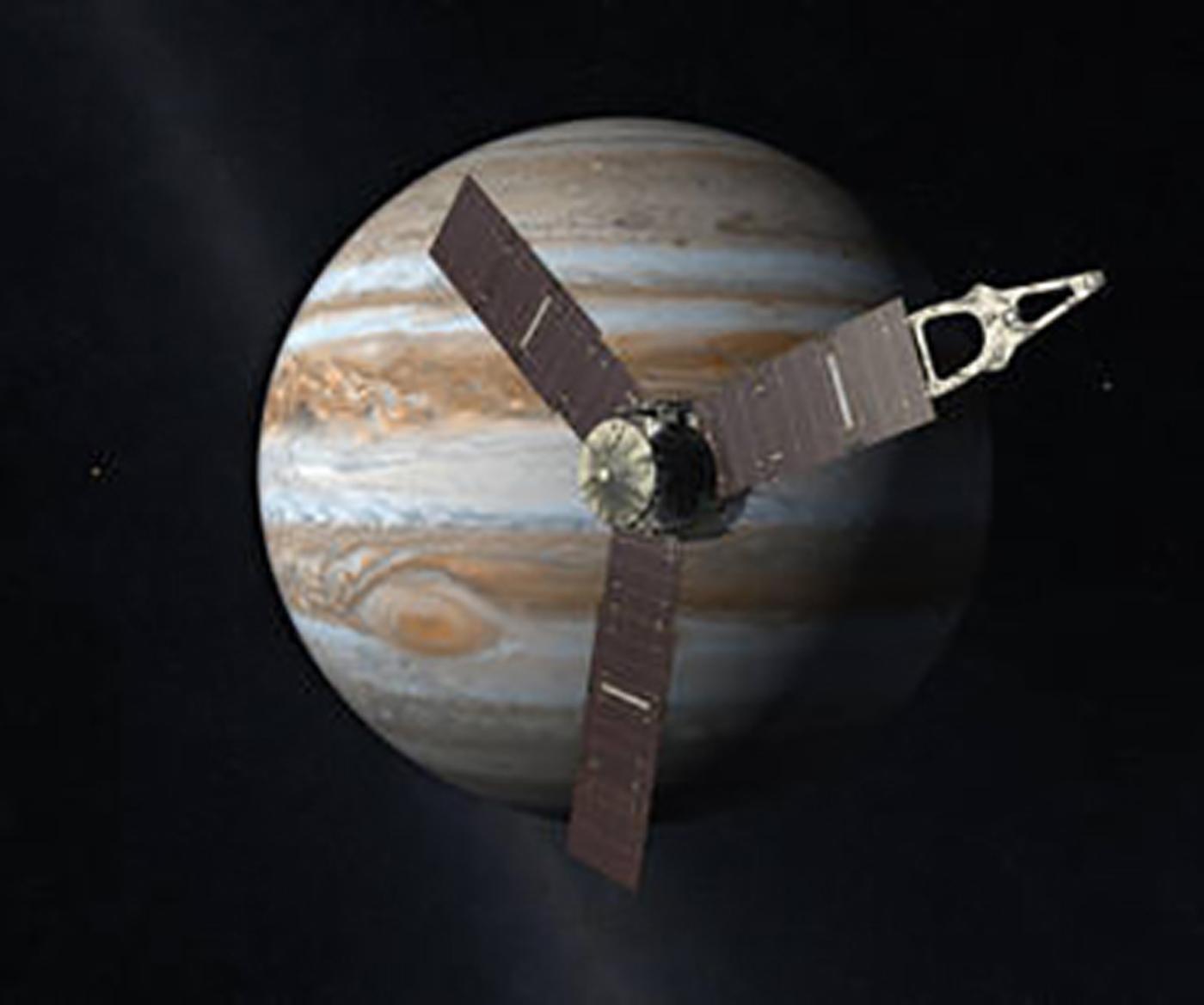
NASA provided Fourth of July excitement this year when the Juno spacecraft arrived at the majestic planet Jupiter and successfully went into orbit. Juno is only the second spacecraft to orbit Jupiter, after the Galileo mission of the 1990s. Its particular focus is to understand the inner workings of giant planets.
With our exploding knowledge of planets around other stars (exoplanets), it becomes more and more important to understand the workings of the few planets we can study up close. Although giant planets may not be as common as smaller, rocky planets, most of the planets we know about are giants (since they are easier to detect), and so better understanding giant planets like Jupiter is a pressing order of business as we seek to put our solar system in context.
We also study giant planets to understand their role in the formation of our own solar system. Jupiter’s gravity influences everything else in the solar system, including the orbit of Earth. Many models of our early solar system involve Jupiter “throwing its weight around” in ways that include delivering to Earth the water that makes up our oceans, keeping Mars small, and perhaps ejecting one or more planets that were formerly numbered with our current eight.
The Juno mission has two primary thrusts: the chemical make-up of Jupiter and its internal structure.
Detectors of radio, infrared, and ultraviolet will look for fingerprint-like signatures that will tell us about Jupiter's chemical composition. How much water, ammonia, and other molecules are mixed in with Jupiter’s atmosphere that is predominantly hydrogen and helium? If Jupiter formed from what was leftover after the Sun was made, and if the rest of the solar system (including us) formed from what was leftover after Jupiter was made, then Juno’s measurements of Jupiter’s chemistry will give us important clues about our own origins.
Meanwhile, other Juno instruments will detect fine structure in Jupiter's mighty gravitational and magnetic fields, which are generated in the planet’s interior. Careful measurements of Juno’s orbit will reveal how the mass inside Jupiter is arranged. These results will give us insight as to what goes on inside the planet, where incredible temperatures and pressures make it impossible to go directly.
Enormous technical challenges were overcome in order to make the Juno mission possible. Jupiter’s intense magnetic field mobilizes charged particles like electrons and protons to great speeds, posing great danger to the spacecraft or anything else in the vicinity. To get close enough to Jupiter for its mission, Juno’s instruments are encased in titanium armor as strong as a bank vault. Its looping orbit over Jupiter’s poles allows Juno to avoid spending much time in the strongest radiation belts. Finally, thanks to advances in solar panel technology, Juno is also the first spacecraft to the outer planets (where the Sun is distant and dim) to be powered by solar energy.
Studying the most visually iconic aspects of Jupiter--its clouds and its moons--is not among Juno’s primary science goals. Two missions to Jupiter’s moons, one American and one European, are currently planned and will likely reach Jupiter in the next two decades. Other targets for future space missions include the ice giant planets, Uranus and Neptune, which are fundamentally different from the gas giants Jupiter and Saturn in their structure, makeup, and inner workings. There is a large class of ice giant-sized exoplanets, for which Uranus and Neptune likely provide better “ground truth” than do Jupiter and Saturn. Both NASA and the European Space Agency have expressed interest in sending a probe to one or both of the ice giant planets, but no mission is specifically planned yet.
In less than two years, the Juno mission will have concluded, as will the Cassini mission at Saturn. The Voyager and New Horizons spacecraft should still be functioning, though they are already beyond the realm of the outer planets. Missions to Mars and to the asteroids will also continue. Nevertheless, for the first time since the 1970s, no manmade signals will be coming to Earth from the outer planets two years from now. Given the time it takes to mount a spacecraft mission of this type, it is inevitable that the outer solar system will be “radio dark” for over a decade, due to budgetary and planning decisions that were made years ago. We can hope that the dividends of the Juno mission will advance our knowledge of giant planets, exoplanets, and solar system origins, and will also provide a foundation for humanity's triumphant return to the outer solar system.
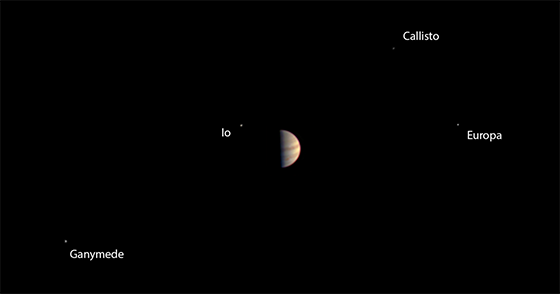
This is the final view taken by the JunoCam instrument on NASA's Juno spacecraft before Juno's instruments were powered down in preparation for orbit insertion. Juno obtained this color view on June 29, 2016, at a distance of 3.3 million miles (5.3 million kilometers) from Jupiter.
The spacecraft is approaching over Jupiter's north pole, providing an unprecedented perspective on the Jupiter system, including its four large moons.
NASA's Jet Propulsion Laboratory, Pasadena, California, manages the Juno mission for the principal investigator, Scott Bolton, of Southwest Research Institute in San Antonio. The Juno mission is part of the New Frontiers Program managed at NASA's Marshall Space Flight Center in Huntsville, Alabama. Lockheed Martin Space Systems, Denver, built the spacecraft. JPL is a division of Caltech in Pasadena.
More information about Juno is online at http://www.nasa.gov/juno and http://missionjuno.swri.edu. Image Credit: NASA/JPL-Caltech/SwRI/MSSS
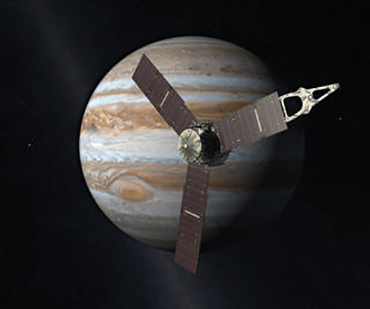
Artist concept of NASA's Juno spacecraft at Jupiter. - Credits: NASA (Click for Big Image)
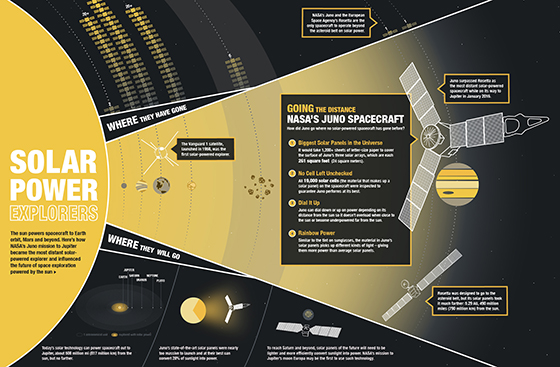
This shows how NASA's Juno mission to Jupiter uses solar power. - Credits: NASA (Click for Big Image).
More Images HERE.


